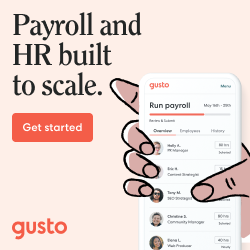As a business owner, you likely spend more time than you’d like on human resources (HR) tasks. From managing payroll and benefits to staying current on employment regulations, HR can monopolize your schedule. Fortunately, a Professional Employer Organization (PEO) can handle your HR functions.
But when’s the ideal time to bring a PEO on board? The answer depends on your business goals and tax situation. Keep reading to learn about strategies for timing your PEO transition to maximize convenience and cost savings.
Why Do Companies Partner with PEOs?
Before choosing your ideal time to add a PEO, review the key benefits this move offers:
Access to Business Services
PEOs deliver a suite of HR services, including:
- Payroll administration
- Health and retirement benefits management
- Compliance with labor regulations
- Employee handbooks and policies
- Safety programs and training
- Recruiting assistance
This comprehensive support lifts day-to-day administrative burdens off your plate so you can concentrate on high-impact priorities.

Cost Efficiencies
In addition to convenience, PEOs provide economies of scale. They leverage massive purchasing power to secure affordable rates on payroll processing, workers’ compensation insurance, health benefits, and more. Those savings get passed along to your business.
Risk Mitigation
With a PEO overseeing HR compliance, you reduce exposure to penalties for mistakes, missed deadlines, or lack of required policies. The PEO assumes these liabilities.
Clearly, PEOs offer game-changing help for entrepreneurs looking to optimize efficiency, control overhead expenses, and minimize legal risks. Now let’s explore ideal timing for initiating this partnership.
How Tax Treatment Impacts Cost Savings
A major factor in deciding when to add a PEO is understanding how the transition impacts payroll taxes, and consequently, your bottom line. Here’s a quick primer on employment taxes:
Social Security and Medicare Taxes
Employers and employees each pay 7.65% (6.2% for Social Security and 1.45% for Medicare).
Federal Unemployment Tax (FUTA)
Employers pay this tax, which funds unemployment benefits for employees. The FUTA rate is 6% of the first $7,000 in wages paid to each employee annually.
State Unemployment Tax (SUTA)
Employers pay state unemployment taxes at rates that vary by state. This covers state unemployment benefits.
Many states treat the PEO as the employer of record for unemployment tax purposes once the agreement starts. However, the Internal Revenue Service (IRS) views the client company as the employer regarding federal taxes.
How does this impact your costs? If you bring on a PEO mid-year, you may essentially double your FUTA expense for that year. That’s because you already paid this tax for the portion of the year before the PEO came aboard. Then the PEO also pays FUTA on your behalf for the remainder of the year after initiating services.
The same doubling effect applies to state unemployment taxes in states that assign employer status to the PEO upon execution of your agreement. Therefore, initiating the PEO partnership on January 1 is optimal to avoid extra FUTA and SUTA costs.
Other Benefits of a January 1st PEO Transition
Beyond minimizing unemployment tax expenses, starting your PEO relationship early in the year brings additional perks:
Continuity in Payroll Processing
Rather than changing payroll systems mid-stream, which could frustrate employees, January 1 allows you to implement the PEO’s payroll administration from the outset of the year. Workers really appreciate consistency!
Streamlined Benefits Enrollment
Most benefit plans follow the calendar year. Entering a PEO agreement on January 1 lets you seamlessly transition employees to the PEO’s benefits packages at open enrollment time. So, there are no disruptive changes mid-year.
Full-Year Advantage
Adding a PEO at the start of your fiscal period allows you to realize the full-year impact of expanded services and cost savings. Your business reaps rewards right from day one.
No Disjointed Quarters
Certain PEO-provided benefits, like workers’ compensation policies, may follow calendar quarters. A January 1 transition syncs your account upfront rather than falling somewhere in the middle of a quarter.
Opportunity for Change
A new year represents a fresh start and the chance to set goals. For many companies, January 1 aligns well with launching operational changes like onboarding a PEO.
Ideal Alternatives to January 1
While a New Year’s Day PEO implementation makes perfect sense for many organizations, others may be in situations that call for a different transition date. Two other optimal times to initiate services are:
Start of Your Fiscal Year
If your fiscal year doesn’t follow the calendar year, consider bringing the PEO aboard at the outset of your fiscal period. This ensures you maximize cost savings and other benefits across the full fiscal term.
Start of Your Busiest Season
For seasonal companies, entering a PEO relationship just before peak activity begins allows you to offload HR tasks before workflow gets hectic. The PEO supports you through the crunch so you can focus on customers and operations.
The Time to Plan Is Now
As you can see, timing is a strategic part of gaining the most value from a PEO partnership. To take advantage of an upcoming New Year’s or fiscal year transition, it’s smart to begin planning a few months ahead. Steps include:
- Researching potential PEO partners
- Sourcing proposals
- Conducting due diligence
- Reviewing service agreements
This preparation ensures you can finalize vendor selection and smoothly onboard your new PEO to start the year off right.
If you still need HR support for the remainder of this year, interim outsourcing can quickly relieve administrative burdens until your long-term PEO relationship kicks off. Retaining an employer of record service or HR consultant provides flexible assistance leading up to your ideal PEO transition date.
Avoiding delay is key. Take steps early so you start the new calendar with an infrastructure that maximizes efficiency, cost control, and regulatory compliance. Each new year presents a prime opportunity to upgrade your HR so you can focus on accelerating growth rather than the burden of admin tasks.



